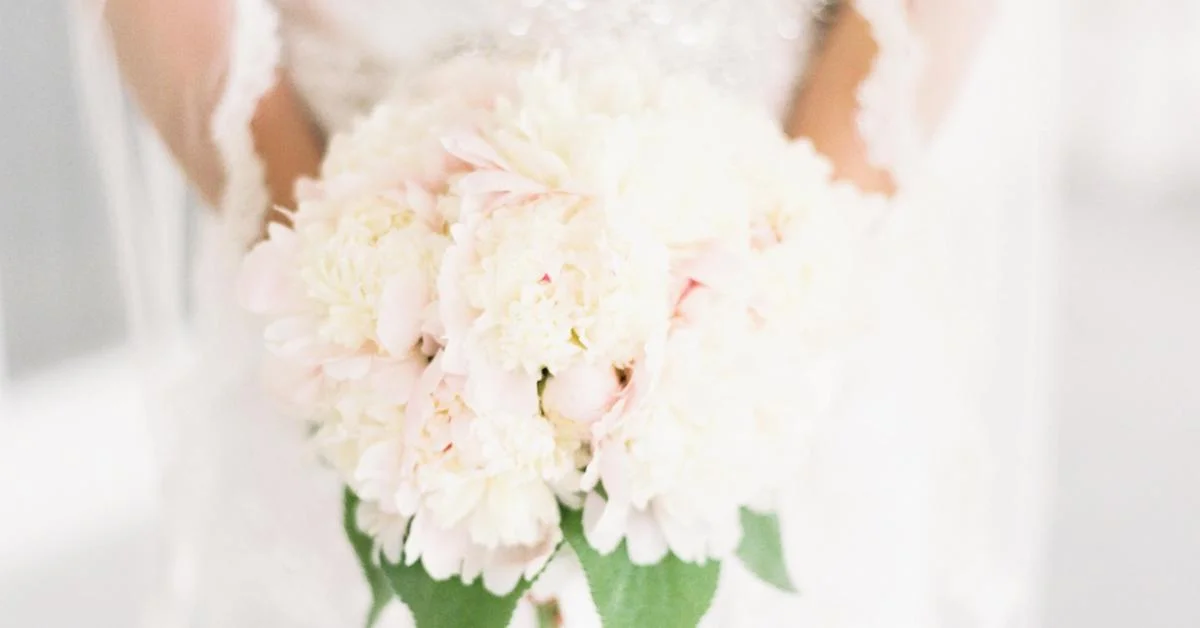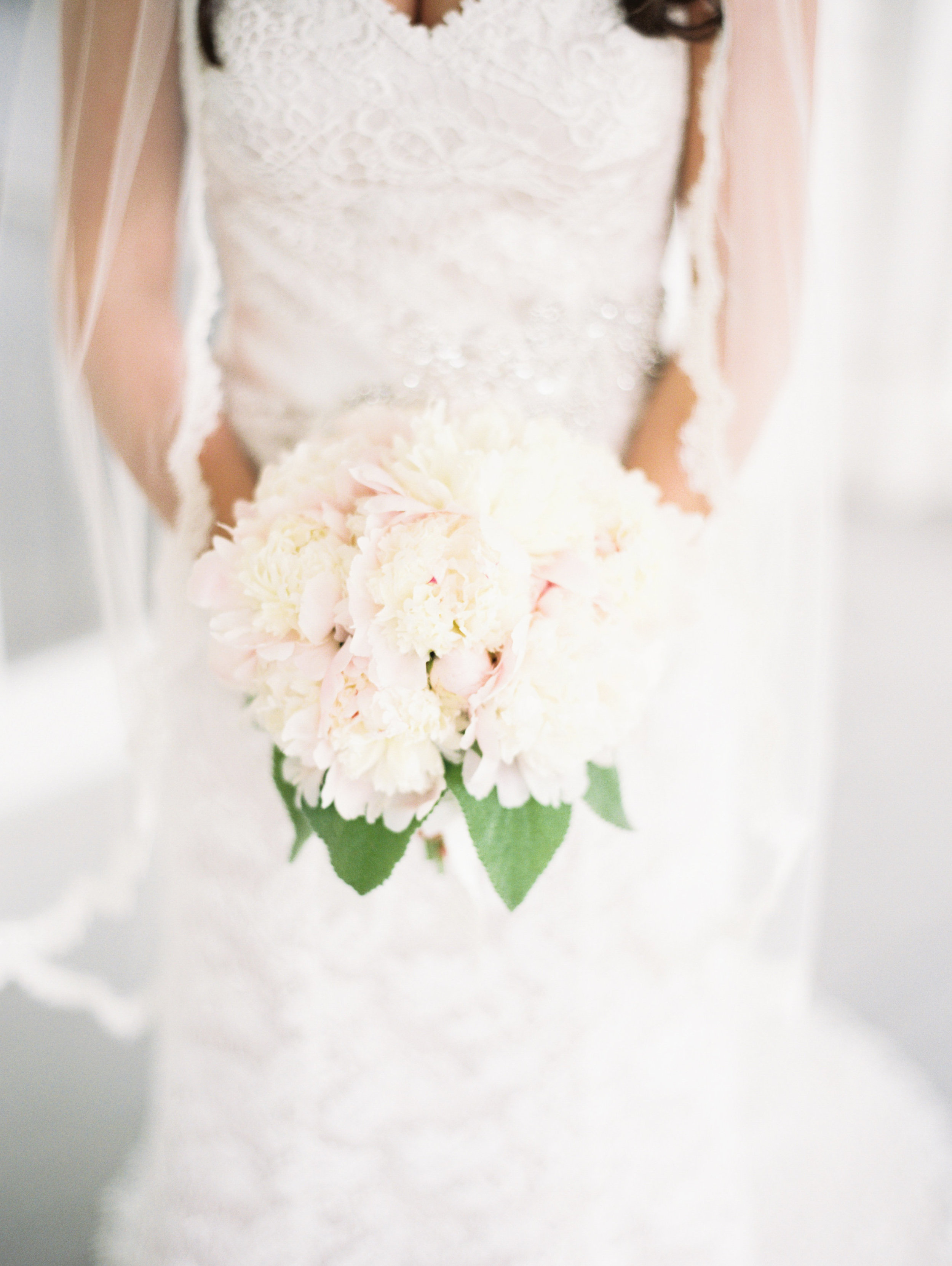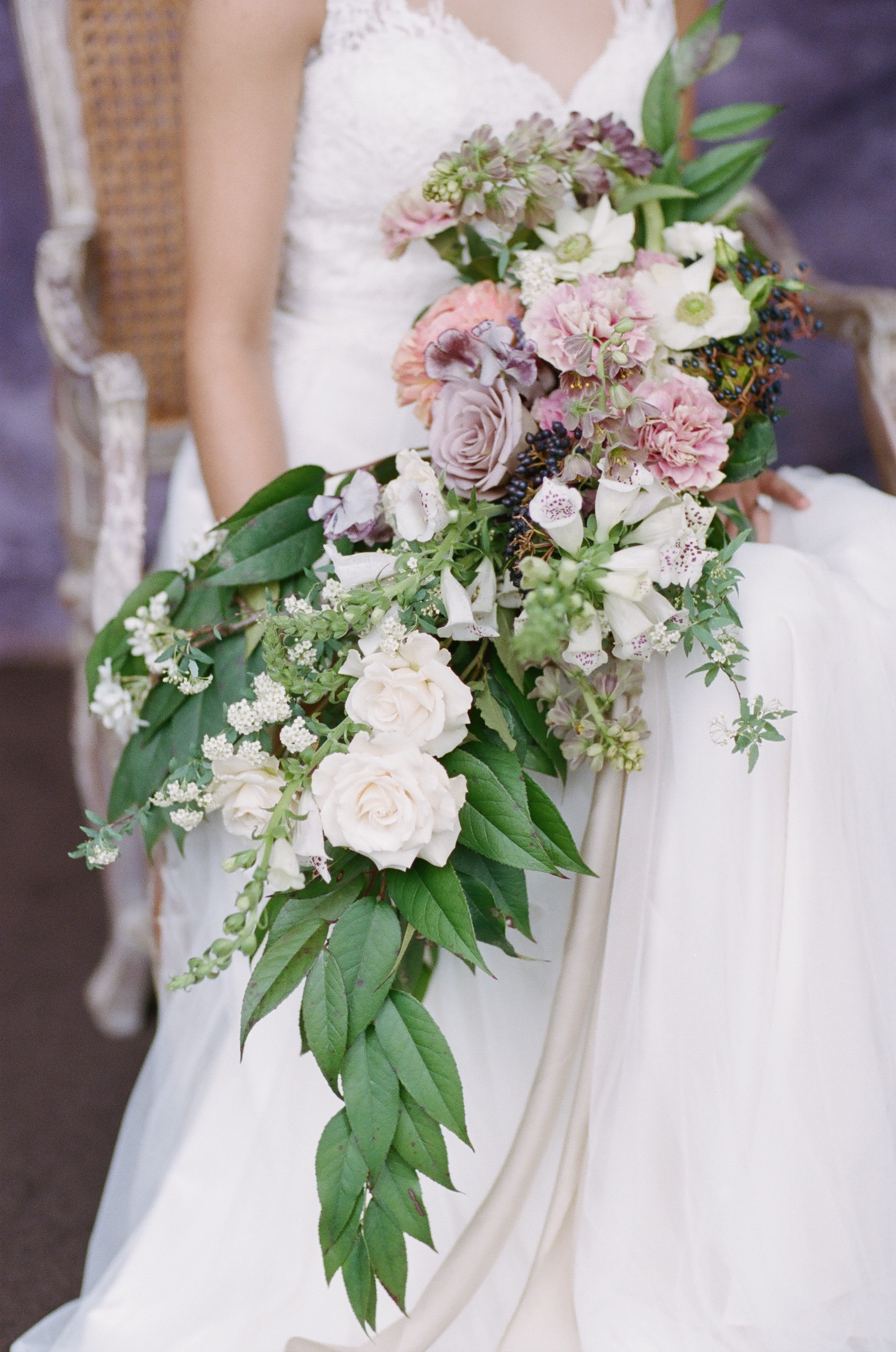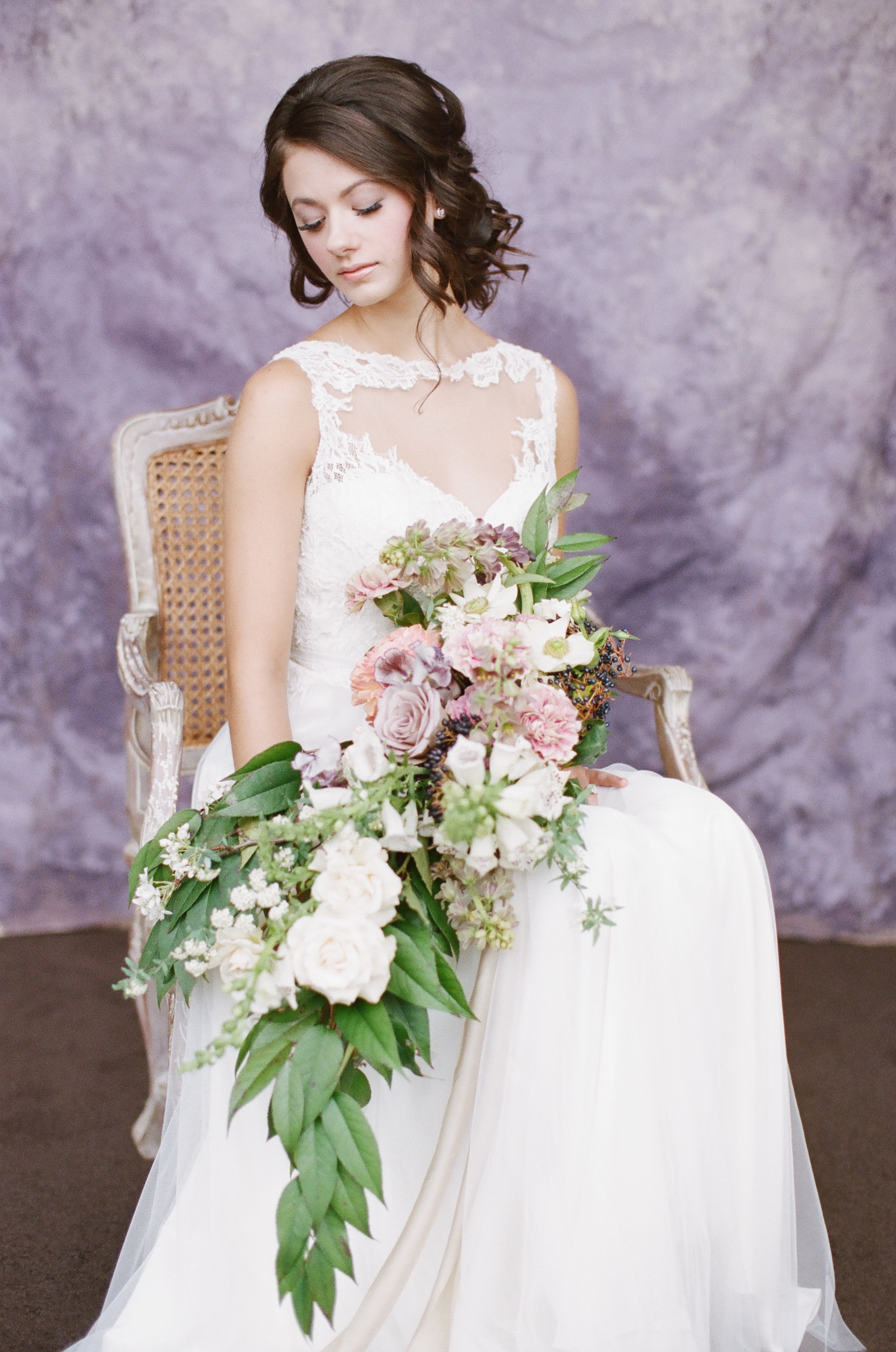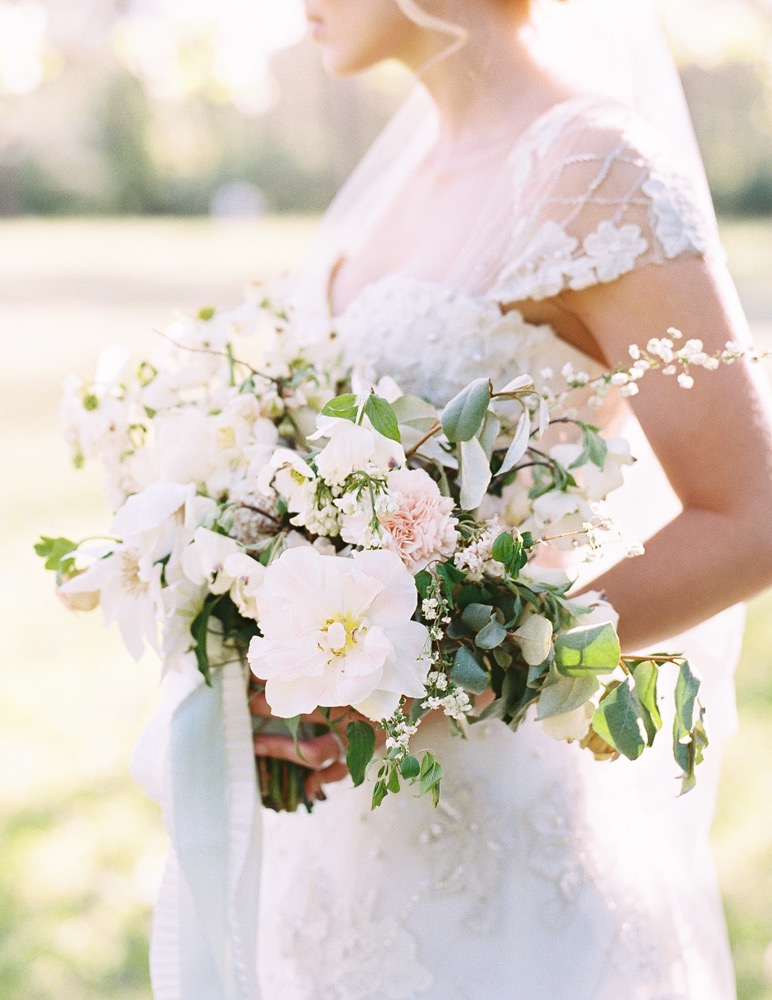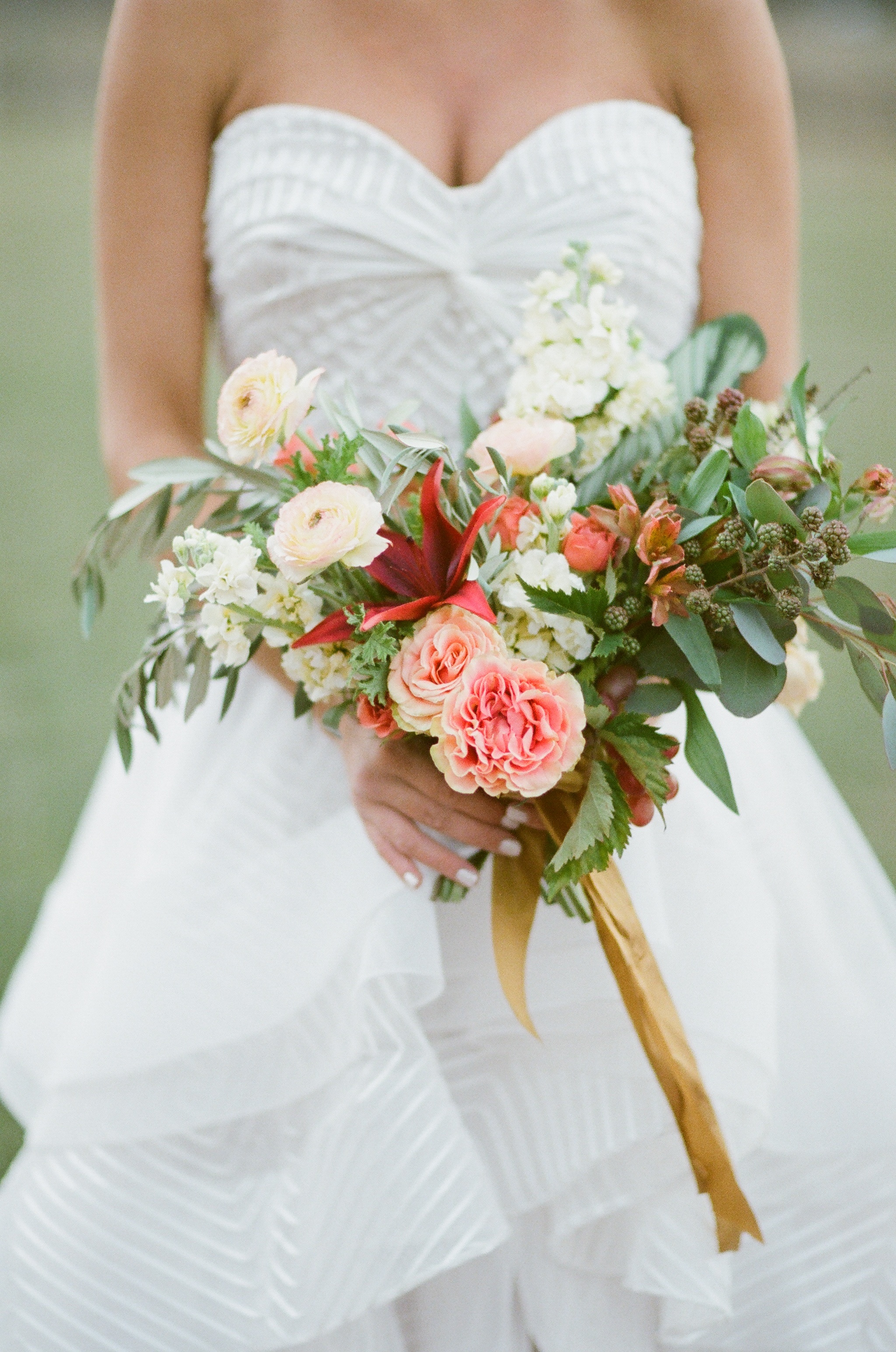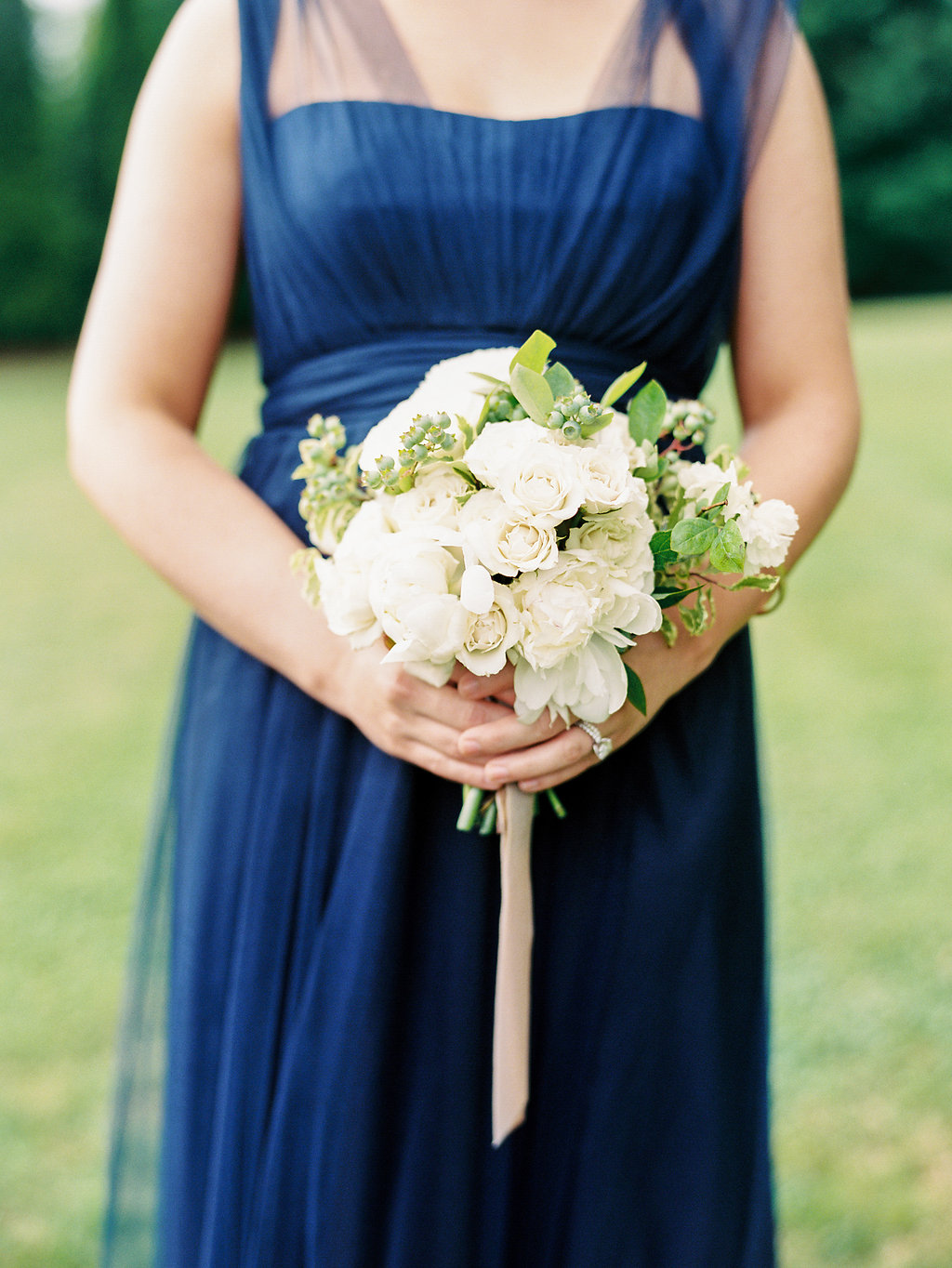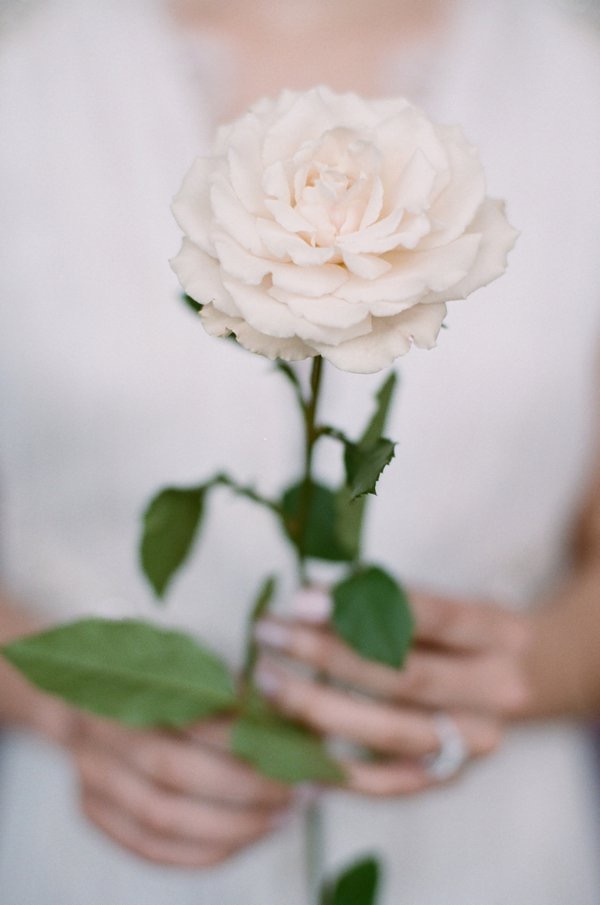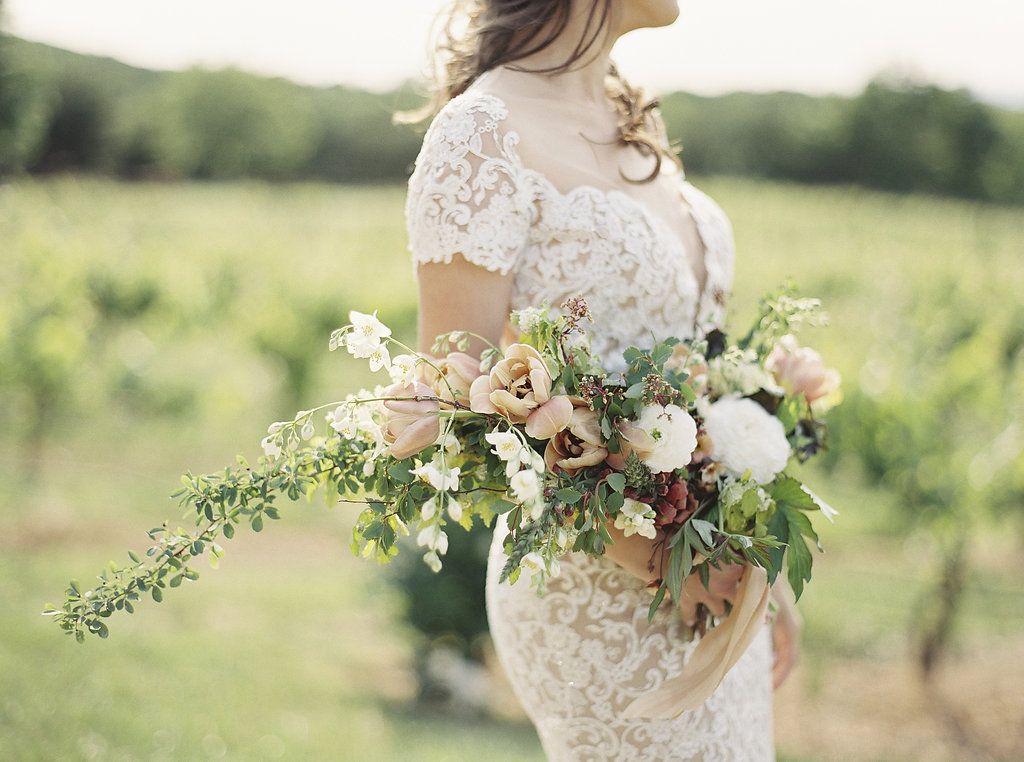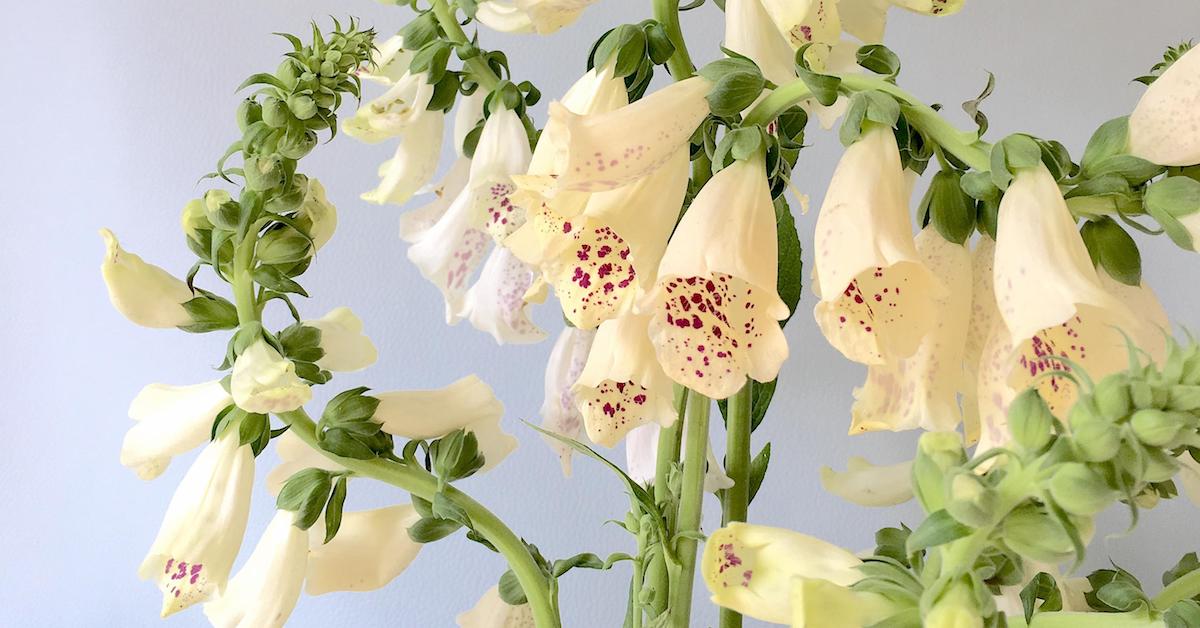Types of Wedding Bouquets
In reality, the floral design world can be quite overwhelming - both to designers and to potential clients. There are color options and combinations in addition to a vast amount of available flowers, all on top of various styles and design techniques. How does one make decisions with so many options? That’s a loaded question! I believe that the best way is to educate yourself and your client.
As a designer, it’s our job to inform and lead our client, and our success in that also depends on how well we get to know them. We need to not only know what the options are, but we need to know how/which options best fit our clients. Having this knowledge helps especially in choosing the design style for the bridal bouquet! In this article, we are going to visit each kind of wedding bouquet and which type of client each design fits best.
Round
This bouquet usually features very little greenery and is arranged in a large, tight, round shape. A round bouquet contains no “air” between blooms and is generally coupled with a full stem wrap. Use this type of design for a bride who is classy and traditional, desiring a refined, stately bouquet.
Cascade
The best fit for an elegant, chic bride. Designing a cascade bouquet can be difficult, as it contains both flowers and greens which waterfall towards the ground from the hand. When choosing blooms for this style, select flowers and greenery that have a natural flowing quality (like amaranthus, seeded eucalyptus, ivy, and clematis).
Almond Leaf Studios
Almond Leaf Studios
Contemporary
This style is either a florist’s dream or a florist’s nightmare because there are no real guidelines or rules. This style comes across as looking unstructured, but in reality, it often has a rather complicated construction. The contemporary design works best for a bride who is unique and eccentric and desires an unconventional style.
Garden
Also known as the “crescent” bouquet, this design begins with a cluster of blooms in the center and tapering off as it spreads out on either side. It is inspired by how flowers grow in the garden, and its airy style makes it the best fit for whimsy, playful brides who feel a connection to the earth.
Landon Jacob Photography
Hand-Tied
Perhaps the most popular style for brides, this design is simple and can be easily accomplished by DIY brides. Because it is loose and unstructured, the hand-tied bouquet is perfect for a laid-back bride who likes a natural, organic, and wild look.
Almond Leaf Studios
Almond Leaf Studios
Nosegay/Posy
While these two styles are slightly different (the posy is moderately smaller than the nosegay), they are quite similar in design and execution. Both are arranged in a round shape, with all of the stems cut the same length. There is little to no greenery and a limited number of stems making the bouquet lightweight and easily held in one hand. This best fits a client who tends toward a delicate, dainty, and refined look.
Single Stem
The most straightforward design, this style includes one stem of a flower - usually one with a large bloom like the king protea or garden rose. This style is excellent for budget brides while at the same time being dignified, clean, and modern.
Pomander
Literally a ball of flowers! Customarily used for flower girls, this design would also work for a bride who is fun-loving with a childlike enjoyment of life. Pomanders can contain both flowers and greenery or one or the other. There is a bit of versatility with the types of flowers that are used, though it is best to choose those that can help form the shape of a ball (i.e., NOT hydrangeas).
Presentation
Also known as the pageant bouquet, this design has become more popular amongst brides. It rests comfortably in the crook of the bride’s arm and usually utilizes line flowers as well as long flowing greens. The presentation bouquet is adaptable - it can be ornate and regal for a fancy, classy wedding, or it can be lush and romantic for a dreamy, wistful wedding.
Jake + Heather Photography

